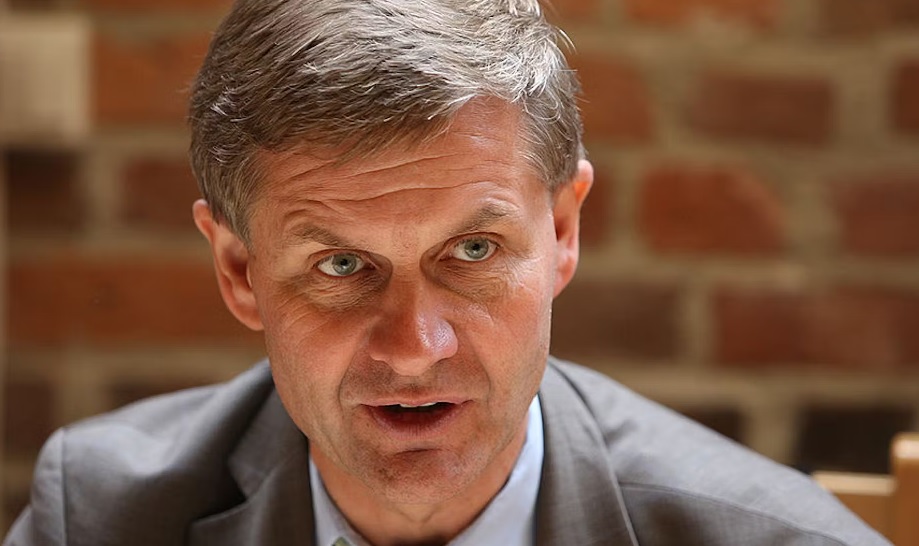Erik Solheim played a significant role as the chief negotiator in the Sri Lankan peace process, working towards resolving the longstanding conflict between the Sri Lankan government and the Tamil Tigers (LTTE). As a mediator, he engaged in high-stakes negotiations, striving for a peaceful solution at a time when the LTTE, led by Velupillai Prabhakaran, was at the height of its military power. Solheim’s efforts focused on encouraging dialogue and offering peace initiatives, aiming to avert further violence. His experience offers valuable insights into the complexities of peace negotiations and the dynamics of armed conflicts.

Here is a reflection of Solheim on LTTE, leader Velupillai Prabhakaran made while turning the pages of new book written on the LTTE by an Indian journalist.
What turns a young man, who leaves home to fight legitimate grievances in his community and nurtures big dreams on behalf of his people, into a dedicated killer who sees violence as the answer to every problem?
The Indian journalist, M.R. Narayan Swamy, who has followed the story of The Liberation Tigers of Tamil Eelam (LTTE), sets out to answer this question in his timely and well-researched book The Rout of Prabhakaran.
As the chief negotiator in the Sri Lankan peace process, I asked myself the same question numerous times: How, as Swamy puts it, did “guns become the answer to overcome each and every obstacle in the chessboard of Tamil Eelam” in Velupillai Prabhakaran’s mind?
Prabhakaran was the main strength, as well as the principal weakness, of the LTTE. He created one of the most effective guerrilla forces in the world and turned the somewhat sleepy and unsexy Tamil struggle into one of the epic wars at the turn of the 20th century. No movement in human history has mobilized the suicide weapon in such a deadly fashion—killing a former prime minister of India, and numerous Sri Lankan leaders.
It all ended in an orgy of violence orchestrated by the Sri Lankan army in May 2009, with the death of every LTTE leader who had not defected to the army years earlier. Prabhakaran and his entire family were killed. His 12-year-old son, Balachandran, was murdered in a blatant war crime even after being taken into custody by the army.
A paradox. Though he was fighting for Tamils, paradoxically, Prabhakaran also became the big killer of Tamils. He annihilated all competing Tamil militant groups. He hunted down Sri Sabaratnam of the Tamil Eelam Liberation Organisation in Jaffna. His comrade-in-arms, Mahattaya, was shot as an Indian spy in the Vanni. The historic Tamil leader Amirthalingam was murdered in Colombo.
My friend Neelan Thiruchelvam was blown up by a suicide cadre in Colombo, even as he was headed for Harvard. The LTTE later told me it was because he had refused to abandon the process of proposed changes to the constitution. Foreign Minister Lakshman Kadirgamar was shot in 2005, in what today can best be seen as the beginning of the end for Prabhakaran.
How does one explain this turn in Prabhakaran?
Two explanations stand out in Swamy’s telling. Prabhakaran had a very narrow horizon; he did not understand geopolitics or the workings of the big neighbor, India. He hardly ventured to the south of Sri Lanka and had interacted very little with Sinhalese or Muslims. His perspective was that of the village. How else can you explain the stupidity of killing Rajiv Gandhi in 1991, who was India’s prime minister from 1984 to 1989, at a time when India was the main source of support for his struggle? Would a successful rebel movement in Mexico attempt to murder President Trump?
The LTTE was also primarily a military movement. It did not mainly involve itself in mass work, political mobilization, or humanitarian efforts. Did the early spectacular military successes against the Indian army, later over-running the Elephant Pass, nearly wiping off the Palaly airbase, and attacking Colombo airport in an extraordinary raid with devastating effects on the Sri Lankan economy create a certain arrogance?
There is a history of guerrilla fighters turning themselves into successful political leaders, particularly when they understood the need for a broad front, and, even more importantly, that the gun was only a supplementary vehicle to the political struggle. Yoweri Museveni in Uganda, Meles Zenawi in Ethiopia, and the Chinese and Vietnamese Communists won military triumphs against all odds, but in the end, their victories were political. Michael Collins, the founding father of Ireland, was an extraordinary assassin of the British, but he knew that the British Empire could not be brought down with guns alone.
An end foretold. Was the end preordained then for Prabhakaran? Swamy thinks so. But he doesn’t try to explain why the LTTE entered into the peace process, not out of weakness, but at the peak of its power in 2002. Why negotiate when you are strong?
I met Prabhakaran many times and saw softer aspects of the man. He was a film enthusiast and a dedicated cook. He adored his children and sent me to Ireland to secure a place at Dublin University for his beloved daughter Duwaraka. She was accepted, only to be caught up in her father’s renewed war and perish with her family in 2009.

Prabhakaran’s friend and partner Anton Balasingham was the good influence on him, always offering sound and critical advice. It was after Bala died in 2006, that Thambi, or younger brother as Bala called him, started making many mistakes.
He strongly advised against the Tamil boycott of the 2005 election, which brought Mahinda Rajapaksa to power. The Sri Lankan government also made a mistake by restricting access for foreigners to Prabhakaran.
International diplomats like me had tried to guide him toward peace. In the end, it all led to his last apocalyptic decision—to fight to the last day—and the last Tamil. Through Kumaran Pathmanathan, KP, the LTTE ‘foreign minister’, we offered to bring out all the combatants and civilians from the war zone. When KP went to finalize the deal, Prabhakaran refused.
The rest is history. Swamy does not explain all aspects of the Sri Lankan crisis. The” Sinhala war crimes” are not center stage, nor the catastrophic decisions of so many Colombo leaders who created a divided rather than united land. But Swamy masterfully sums up the extraordinary life and legacy of Prabhakaran.
Note: This review originally appeared in The Hindu. All credits go to The Hindu and the author, Erik Solheim, for the content. -From Jaffna Monitor)
On the Book :
News about Vellupillai Prabhakaran and his Liberation Tigers of Tamil Eelam (LTTE) militant group were once front-page in every Indian daily for many years till his death in 2009 at the hands of the Sri Lankan army after a bitter and bloody final battle. While Sri Lanka has moved on since then, a post-mortem of those days and events has been wanting. Konark is happy to fill in this much-needed gap with ‘The Rout of Prabhakaran’. Written in a lucid style, the book makes for fascinating reading and will surely be a treasure trove of information on the Tamil ethnic conflict. The book is being published in Sri Lanka and in India.







